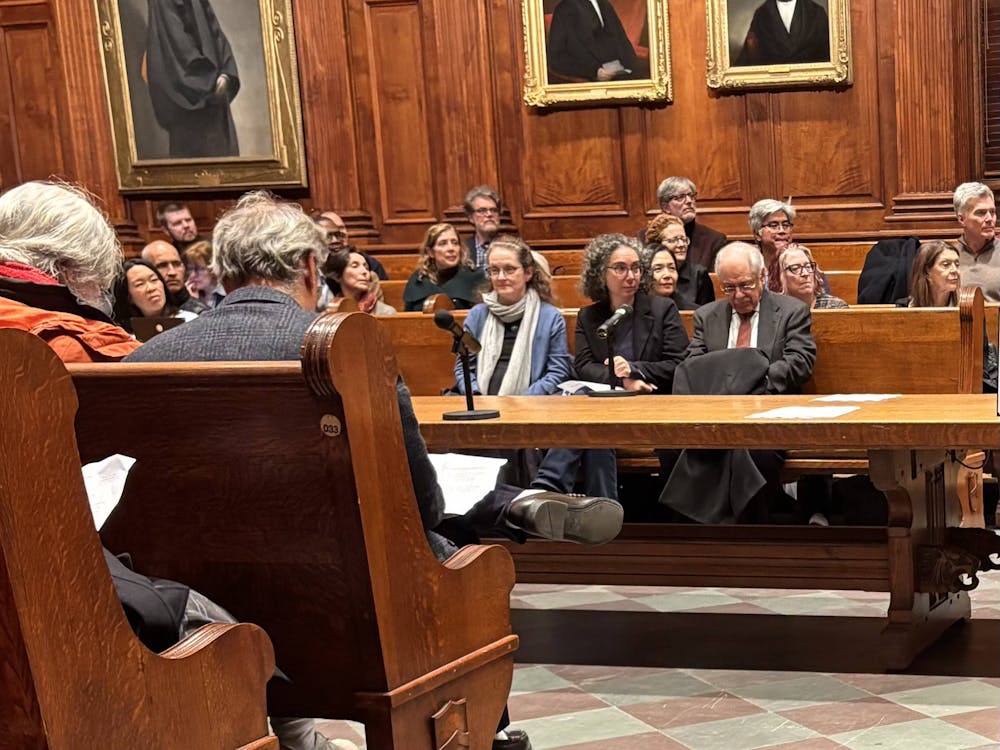The University endowment returned 21.9 percent and 14.7 percent in fiscal year 2011 and fiscal year 2010, respectively.
Yale noted a return of 4.7 percent, while Harvard posted a loss of 0.05 percent in the 2012 fiscal year. Dartmouth outpaced all other Ivies with a positive return of 5.8 percent. Now that Princeton has released its returns, Cornell is the only Ivy yet to release its results.
Princeton released its endowment figures on Friday afternoon following a directors meeting of the Princeton University Investment Co. the day before.
“Despite the extreme market volatility of the past decade, PRINCO’s excellent stewardship of the endowment has generated significant growth and ensured that the University can successfully pursue its key priorities,” University Provost Christopher Eisgruber ’83 said in a statement.
Though the University’s return was positive, the actual value of the endowment shrank by $100 million to stand at $17 billion. The decrease was attributed to University spending, which exceeded the gain in investments. Nonetheless, Eisgruber indicated that the University would increase its financial aid budget for the current year, raising its value by 5.6 percent to $116 million.
The decline in return on investment across the Ivy League is in line with the broader financial climate. In the same period from June 30, 2011, to June 30, 2012, the Standard & Poor’s 500 Index — seen as a general indicator of market performance — gained 5.5 percent. However, endowments and foundations achieved an average return of only 0.37 percent in the same period, according to Wilshire Associates, which assesses the performance of various investor groups.
In the face of these conditions, PRINCO President Andrew Golden was positive regarding this year’s return.
“In many ways, it’s actually a very solid performance, given the environment,” Golden said, “But I consider it an important part of my job to make sure we keep focus on the right horizon, on long-term performance.”
The broad decrease in endowment returns has also been attributed in part to the weak performance of foreign assets, according to experts. Developed foreign markets contracted in value by 13.8 percent, while emerging foreign markets shrank by 15.9 percent in fiscal year 2012. A University report released in 2011 indicated that Princeton holds 16.5 percent of its assets in international equity.
However, Golden said that the University has no plans to significantly alter its long-term investment strategy.
“With the dollar strengthening in general, it means that the more you had outside the U.S. in this particular year, the more you were hurt. But I haven’t lost any confidence at all in that what we’re doing is right for us,” he said. “We have to look at our unique situation and objective as an investor, and we don’t anticipate any major global changes which would cause us to change our course.”
Endowment funds are typically invested in a wide range of asset classes. These classes take the form of stocks, bonds and more complicated “alternative investments,” including private equity, venture capital and hedge funds.

This approach, called the Yale Model of investing, encourages a high degree of diversification and illiquidity, in addition to investing in alternative investments. This model has recently come under scrutiny, as a New York Times business columnist argued that a simpler mixture of 60 percent stock and 40 percent bonds would have outperformed nearly every endowment fund during fiscal 2011.
Golden, who has served as the President of PRINCO since 1995, said he had a “front-row seat” to the development of the Yale Model during his time as a senior associate in the Investments Office at Yale.
“We’ve always said don’t try this at home. This only makes sense if you have the right circumstances. Our circumstances are that we can tolerate illiquidity more than most investors. Our circumstances are that we have access to all of the best managers in every category, and we do a pretty good job of figuring out who those managers are,” Golden said. “The endowment model makes perfect sense for Princeton. It makes no sense — it makes the opposite of sense — for my 84-year-old mother’s portfolio.”
In his 17 years at PRINCO, Golden has overseen the growth of the University’s endowment from $4 billion to $17 billion. Following Friday’s announcement, the University’s 10-year annualized return rose to 9.9 percent, a figure that places Princeton in the top percentile of the 294 institutions reporting their endowment figures to the Trust Universe Comparison Service.
Looking ahead to the 2013 fiscal year, Golden said his team was cautiously optimistic.
“Markets are much more likely to get disrupted when people are feeling good,” he said. “There are so many visible elements of risk out there which the world knows are out there. From our perspective, that’s a good thing.”
The University spent 4.4 percent of the endowment market value in fiscal year 2012, which fell between the 4 and 5.75 percent range targeted by the policy on spending the University has followed in recent years. Although total spending exceeded total investment return, the University announced it expects to increase the spending rate to approximately 4.7 percent in the current fiscal year.







